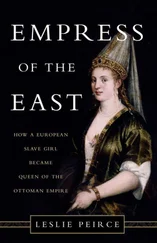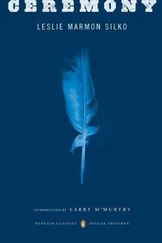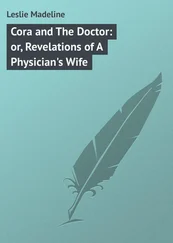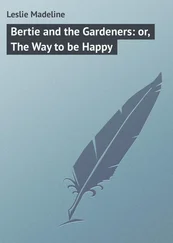Every morning she was up and washed and dressed as Hattie taught her; then she hurried down the stairs and out to the glass house to open Linnaeus’s cage. They walked in silence through the terraces and gardens in the vivid yellow light after the dawn. The air was warm and would get warmer as the sun rose. They washed in the water lily pool below the fountain and strolled down the steps to the back of the property to pick ripe oranges for breakfast. The monkey had strong fingers and was able to peel his orange and consume it before Indigo had eaten half of her orange. The monkey went into the branches and found ripe oranges heavy with juice. The monkey carried his oranges in the crook of each arm; he and Indigo ate them later in the afternoon. Indigo used the skirts of her dress to carry oranges for herself and for Hattie and Mr. Palmer.
Hattie permitted Indigo to pull the bedcovers off to make a bed on the floor after Indigo told her that she was terrified she would fall. At the school they had tied her in her bed to stop her from sleeping on the floor, and that night Indigo had screamed until she was soaked with sweat. Indigo dreamed the red garden and the white garden were growing in the dunes and Mama and Grandma Fleet and Sister Salt were all there with her. They were all so happy with her because she brought back so many interesting seeds.
Every morning Indigo and the monkey brought the oranges to the breakfast table, where the monkey offered an orange to Hattie, who bowed to the monkey as she accepted it; then the monkey went to Edward, who also bowed formally to the monkey as he accepted an orange. Hattie loved the child’s vivid imagination and the make-believe with the monkey; Edward was impressed as well with the rapport the child developed with the creature, and although he was a bit stiff with his formal bow to a monkey, even the monkey joined in the laughter they shared on this occasion.
The lovely morning ritual included breakfast, then more wandering through the gardens, where Edward described the years his mother had spent designing and supervising the plantings that once had thrived there. So many of the more delicate plants and shrubs had died of neglect in the years since his mother’s death. Hattie took her notebook along and the child gravely held one end of the measuring tape while Edward held the other. Hattie described her ideas for each of the terraces and gardens and for the lawn and lilac arcades, and made notes of the places she wished to make new plantings. Edward felt a contentment he had seldom experienced, as he spent the morning with Hattie and the child, and the afternoons with his specimens and correspondence.
He understood Hattie’s reluctance to travel when they were so comfortable where they were, but the letters from Lowe & Company made it quite clear what must done. The night before the child was to return to the school, Hattie asked Edward how he had arranged for the Indian boys to work for him last summer.
It wasn’t difficult, he explained. The school superintendent encouraged the summer placement of students in proper, upright homes because too often promising students went home for the summer and failed to return.
“Please, Edward,” she said, placing her hand gently on his arm, “arrange for Indigo to stay with us for the summer.”
“But we are leaving for New York in a matter of weeks,” he reminded her.
“I feel as if I’ve barely just arrived. I only began to unpack my books last week.”
Edward reminded her how disappointed her parents would be if he arrived alone. What would he tell everyone?
Tell them the truth, Hattie said briskly. The journey by train was exhausting.
Edward did not pursue the matter, because he sensed her opposition strengthen when he pressed further. He wanted very much for Hattie to accompany him. Her presence on the Corsica trip would assure success. He knew only too well from past experience, British or American men who traveled alone aroused suspicion in local authorities and villagers, who refused even to speak to a foreigner, much less permit him to approach their gardens or orchards.
Though reluctant to travel abroad, still Hattie had been agreeable to the trip until the Indian child appeared; now she made it quite clear her intention was to stay in Riverside unless the child came along. Actually, now that he thought about it, he realized the child would be an asset in Corsica; the natives adored children.
The following morning Edward spoke with the school superintendent. He learned the child was an orphan from the remnants of an unknown desert tribe in Arizona. The superintendent was concerned over the child’s rebellious behavior, but Edward assured him that they would be able to control the girl. The child would accompany his wife as a personal companion and she would be taught to read and write and, of course, the proper etiquette, while in their custody. The school superintendent supplied the necessary documents to travel abroad. The proposed travel was permissible so long as the child was returned safely to the school by October.
Edward was pleased to see how relaxed and happy Hattie was to have the girl with her. In the short time they’d had her, the child adjusted quickly to her new surroundings, although after Hattie tucked her in bed, Indigo dragged the bedding to the floor. Despite her bold words in the beginning, the girl was quiet, content to listen to their conversation without comment. She followed Hattie in the gardens but disliked the house, perhaps because of the cook’s hostility. Indigo repeated the names of the plants and shrubs after Hattie, but otherwise she spoke at length only to Linnaeus when they played in the glass house together.
Edward continued to search through his library for ethnological reports on the desert Indians. He was intrigued with the notion that the child might be the last remnant of a tribe now extinct, perhaps a tribe never before studied by anthropologists. He began to read about the known desert Indian cultures of the Mojave Desert and Colorado River basin. He began to compose a list of simple words gleaned from linguists’ work with each of the known desert tribes. When the list was complete, Edward asked Hattie to bring the girl up to his study, where he slowly pronounced the words. The child listened and often laughed at Edward; but asked if any of the words were from her language, she shook her head emphatically.
Neither he nor Hattie were able to pronounce the name the child gave them when they asked her what she wished to be called. The papers from the school had listed her only as “girl child,” approximate age eleven years; a name was assigned to her before she was sent on the train, but the child refused to answer to it.
One morning when Hattie was walking with her, the child bolted off toward the desert. Hattie’s heart pounded for an instant as she feared the child was running away; but almost as quickly she returned with a plant in her hand. She held out the branch of a tall plant with attractive magenta leaves.
“This is the plant I am named for.” Hattie took the plant stalk and examined it carefully. Edward did not have to look at the plant long before he identified a variety of desert indigo.
“Indigo,” Hattie said to the child. “Your name in English is Indigo.”
Hattie’s spirits soared once she knew the child was permitted to stay and to travel with them, and she began to talk to Indigo about the wonderful gardens they would see in England and Italy.
A seamstress was hired to sew clothing for the child. Hattie was pleased with the dressmaker’s allowances for the child — nothing must fit too tightly, otherwise the child removed the offending garments and went on playing, quite oblivious to her own nakedness. Attempts to locate shoes wide enough to fit the child had not been a success, so she would have to wear the slippers that did fit until they reached New York. The steamer trunks were brought out by the stable man. The constant activity around the house unsettled the monkey. The little creature chattered constantly and could no longer be trusted indoors after it went leaping from bookcase to bookcase, pausing only to send a vase or bookend crashing to the floor. Edward thought the monkey may have remembered the steamer trunk from the Brazilian voyage; the monkey traveled inside the trunk after its cage was smashed open in the storm. The child was deeply affected by the monkey’s odd behavior and refused to stand still for a fitting of her new wardrobe, insisting that the new dresses pinched her. She wanted the monkey to sleep with her, and when Hattie explained it was impossible because of fleas, the child crept outside later that night. Hattie got quite a shock when she looked into the child’s room before dawn and she was gone — to the glass house to sleep with the monkey curled up next to her.
Читать дальше












